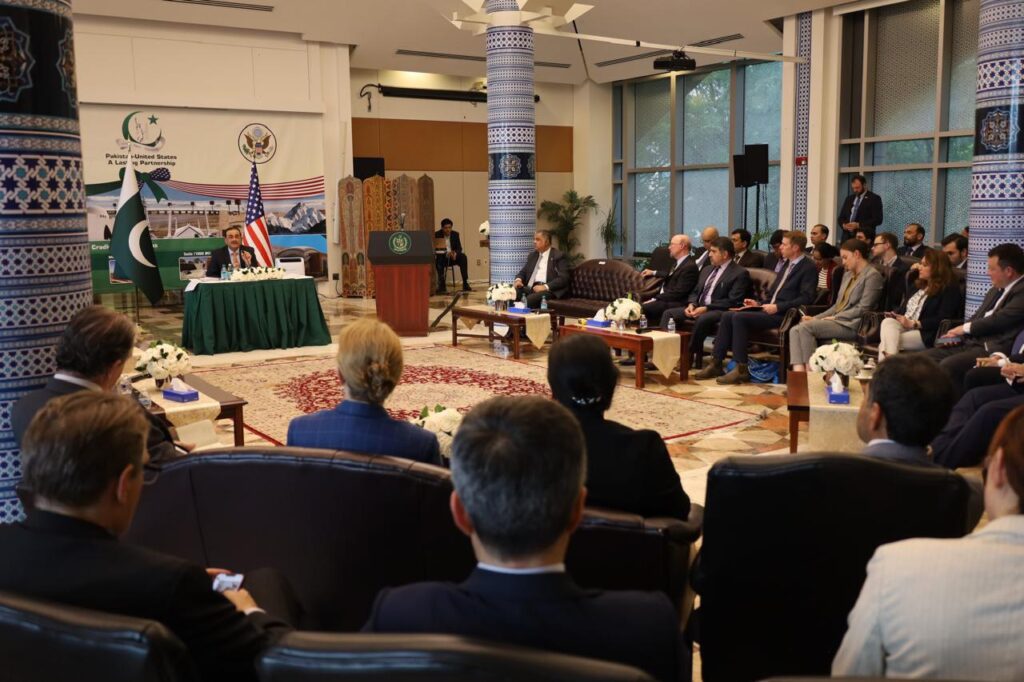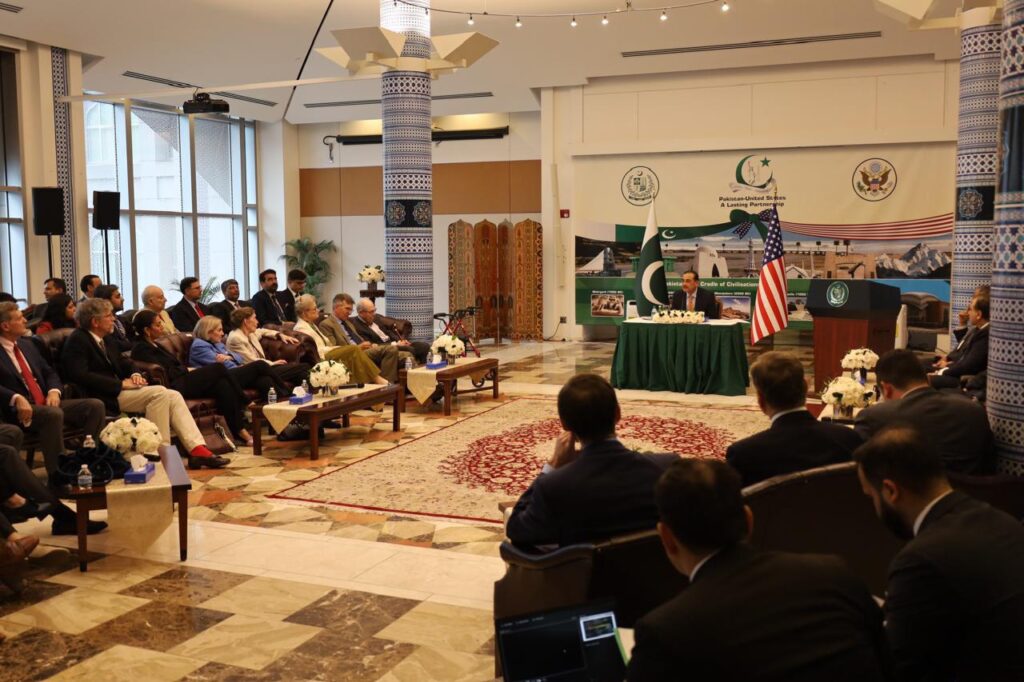Aiman Khattak
The 18th June 2025 meeting between the U.S. President Donald J. Trump and Pakistan’s Chief of Army Staff, Field Marshal Syed Asim Munir, was not merely a diplomatic gesture. It was a calculated, strategic engagement that signals a renewed chapter in the geopolitics of South Asia and beyond. This encounter, held in the White House’s Oval Office and extended to an official luncheon, stands out not only for its length twice the scheduled time but for its substance and symbolism.
To begin with, the mere fact that a U.S. President invited a Pakistani military chief to the White House, for a standalone high level engagement without the presence of Pakistan’s civilian leadership, is unprecedented. It reflects not only the growing trust but also the strategic importance Washington is now attaching to Pakistan’s military establishment in the current global context. For me, this is a rare public recognition of Pakistan’s increasing relevance, particularly as a stabilizing force in a region marred by volatility.

The timing of the meeting is critical. The backdrop of rising tensions between Iran and Israel, and the lingering instability in Afghanistan, made this engagement more than just a bilateral conversation. According to reliable sources, one of Field Marshal Munir’s primary aims was to dissuade the United States from being pulled further into the Iran-Israel conflict. If true, this positions him not just as a military commander but a strategic thinker capable of envisioning long-term regional stability.
Drawing comparisons, this moment reminds of General (retd) Ashfaq Parvez Kayani’s 2010 visit to the United states, where he too submitted a pragmatic peace roadmap for the region.
Although Kayani’s warnings went unheeded at the time, leading to tragic consequences for the U.S. in Afghanistan, perhaps this time, history might take a wiser course. If FM Asim Munir’s counsel urges restraint and is taken seriously, it may yet avert another catastrophic intervention.
Moreover, one of the most revealing indicators of the depth of cooperation was the public acknowledgment by U.S. CENTCOM Commander General Michael Kurilla. He disclosed that Field Marshal Munir had personally informed him of the capture of an ISIS-K (Daesh-K) operative “Jaffar” involved in the infamous Abbey Gate bombing during the U.S. withdrawal from Kabul in 2021. This direct military-to-military coordination, bypassing bureaucratic layers, underscores the operational trust that now exists between the two nations.

Kurilla further emphasized Pakistan’s ongoing counterterrorism efforts, calling the country a “phenomenal partner.” These are not minor endorsements.
In fact, such statements carry considerable weight in U.S. policy circles. The narrative that Pakistan is merely a transactional ally appears to be shifting towards one where Islamabad is viewed as a credible, long-term partner in regional security.
But this meeting wasn’t confined to just military matters. There was a strong economic undertone as well.
According to insiders, both parties discussed expanding bilateral cooperation in areas such as mining and minerals, artificial intelligence, the energy sector, and even cryptocurrency. This diversification of engagement is crucial. It suggests a broader, more sustainable relationship that goes beyond traditional security concerns.
Trump’s expression of interest in a “positive trade agreement” based on mutual benefit reveals that the U.S. is now willing to explore more enduring economic avenues with Pakistan. As someone closely watching Pakistan-U.S. ties, I see this as an opportunity for Islamabad to leverage its untapped economic potential and align it with American technological and capital strengths.
Another crucial point that caught my attention was Trump’s open praise for FM Asim Munir’s role in de-escalating tensions between Pakistan and India. Trump went as far as to say, “I stopped the war between Pakistan and India. This man [FM Syed Asim Munir] was extremely influential in stopping it from the Pakistan side.” This is no small feat, especially considering how volatile the subcontinental dynamics have been.
Furthermore, as per the credible reports, FM Munir thanked Trump for playing a constructive role during the Indo-Pak standoff and appreciated his leadership on global challenges. Trump, in return, lauded Pakistan’s peace-building efforts and agreed to maintain counterterrorism cooperation.
Importantly, both leaders agreed to pursue joint ventures in areas often overlooked in past bilateral agendas.
Now, from a regional lens, this meeting couldn’t have come at a more pivotal time. Iran, notably, thanked Pakistan for its diplomatic efforts in de-escalating tensions. Pakistan’s unique role as a bridge in the U.S.-Iran dynamic is understated but critical. With no formal diplomatic ties between Tehran and Washington, Pakistan’s embassy in D.C. quietly manages the relationship between the two nations. This fact alone underscores Islamabad’s silent but pivotal role in Middle Eastern geopolitics.
But on the other hand, what is equally telling is India’s reaction. The very same day, Indian officials scrambled to issue defensive statements, with India’s Foreign Secretary Vikram Misri releasing an uncoordinated video that was, frankly, incoherent and desperate or I can say with confidence that such reactions often reveal more than any official communique. It was clear that Delhi perceived this meeting as a blow to its narrative of isolating Pakistan internationally.
Following this, Indian media and analysts found themselves cornered. Even noted Indian defense commentator Praveen Swami admitted that the U.S. prioritizing Pakistan over India in strategic consultations was a notable diplomatic win for Islamabad. This effectively re-hyphenates India and Pakistan in the global consciousness, something New Delhi has long tried to avoid.

